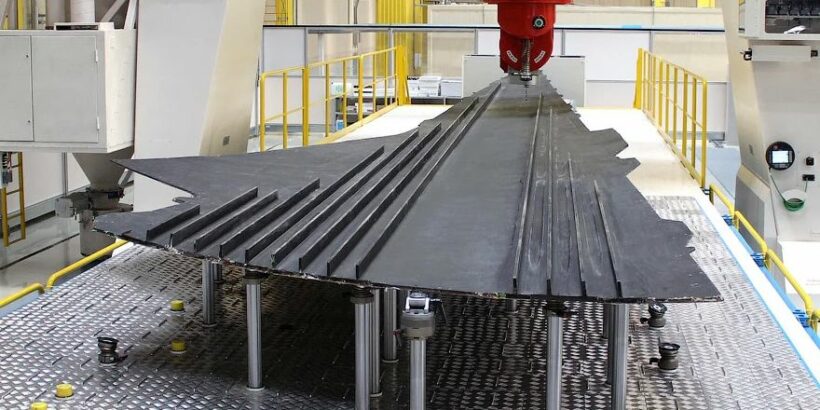One of the processes in the manufacture of parts from polymer composite materials (PCM), which are used in the design of the wing of the aircraft is the mechanical processing of the surface. Current methods often fail to produce the required quality, which can result in defective parts. Low-quality parts can lead to flight incidents, reduction of their operational resource, as well as financial losses, so the search for better solutions that can improve the quality of composite products is underway. Perm Polytechnic (PNIPU) has developed a mathematical model that will allow selecting the most optimal cutting tool and machining mode for composite parts.
“The main technological operations at processing of PCM are drilling and milling, but as a result of deformations of fibres a defective layer is formed on the edges at drilling, and also on the upper and lower layers at milling of composite sheet. To date, this problem is trying to solve by increasing the speed of processing or applying additional coatings on the material, but none of them allows to ensure high quality of the processed surface. According to the polytechnicians, the situation can be corrected by grinding wheels of superhard materials, for example, electrocorundum or silicon carbide,” told in the press service of the university.
“Abrasive processing of polymer composite materials is considered to be one of the most promising for today. Its application can be presented as an addition to milling processing of polymer composite materials, or as a finishing operation. Abrasive machining allows to provide high cutting speeds, sharpness of cutting edge, as well as high hardness of abrasive particles,” believes Vladimir Makarov, Doctor of Technical Sciences, Professor of the Department of “Innovative Machine Building Technologies” of PNIPU.
The scientists conducted a full-factor experiment on processing the composite with abrasive tools. With the help of it they were able to determine that the stability of the process of flat grinding and preservation of cutting ability is provided at the depth of cutting for one stroke up to 0.15 mm and the speed of table feed five metres per minute. If work is carried out beyond these recommendations, the tools lose cutting ability and wear faster. In addition, going beyond the ranges obtained leads to the formation of a defective layer.
“With the help of the experiment, we have described several important processes whose values were not previously known. Based on these, we have developed mathematical models that describe the dependencies of the roughness parameter and the temperature of the upper layers of the workpiece on the presented factors for each cutting tool adopted for the experiments. Each of them can be applied in assigning processing modes of polymer composite materials based on carbon fibre at flat grinding operations,” says Artyom Volkovsky, postgraduate student, senior lecturer of the department of technical disciplines of Lysvensk branch of PNIPU.
The developed mathematical models scientists of PNIPU recommend to start applying them at machine-building enterprises of aviation industry. Thanks to them, defective layers are eliminated during the processing of parts, and the surface quality and strength of the product are improved. The research will help fulfil a large state order for aircraft construction and strengthen Russia’s technological sovereignty in aircraft construction.


